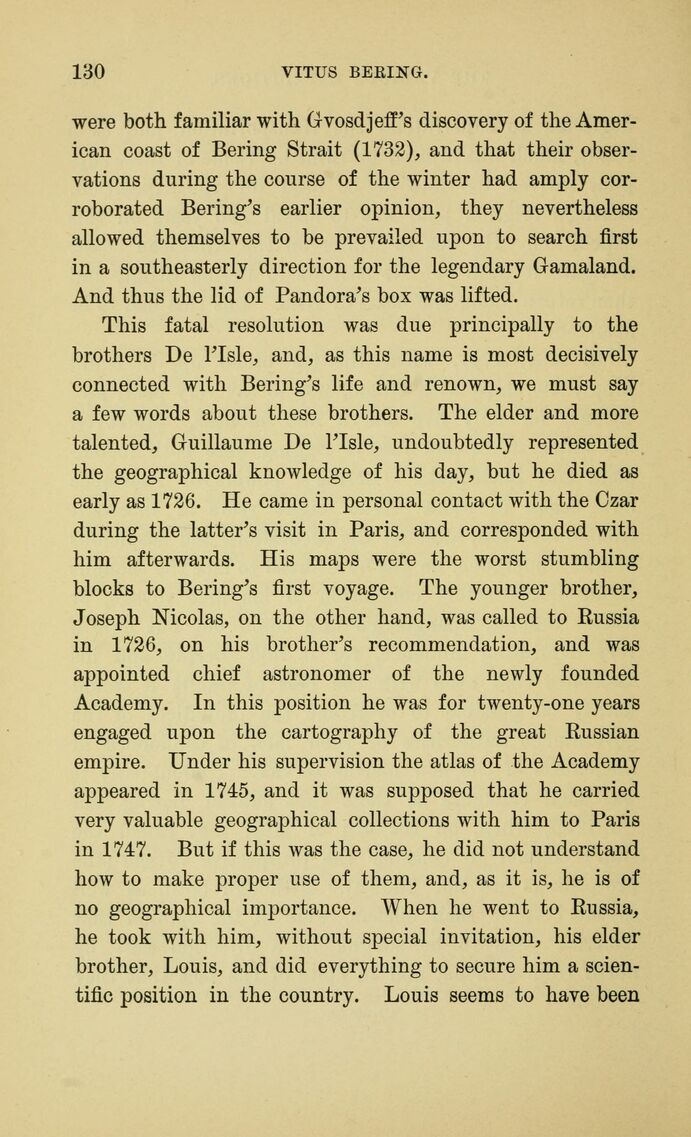
Full resolution (JPEG) - On this page / på denna sida - Chapter XIV.

<< prev. page << föreg. sida << >> nästa sida >> next page >>
Below is the raw OCR text
from the above scanned image.
Do you see an error? Proofread the page now!
Här nedan syns maskintolkade texten från faksimilbilden ovan.
Ser du något fel? Korrekturläs sidan nu!
This page has been proofread at least once.
(diff)
(history)
Denna sida har korrekturlästs minst en gång.
(skillnad)
(historik)
were both familiar with Gvosdjeff’s discovery of the
American coast of Bering Strait (1732), and that their
observations during the course of the winter had amply
corroborated Bering’s earlier opinion, they nevertheless
allowed themselves to be prevailed upon to search first
in a southeasterly direction for the legendary Gamaland.
And thus the lid of Pandora’s box was lifted.
This fatal resolution was due principally to the
brothers De l’Isle, and, as this name is most decisively
connected with Bering’s life and renown, we must say
a few words about these brothers. The elder and more
talented, Guillaume De l’Isle, undoubtedly represented
the geographical knowledge of his day, but he died as
early as 1726. He came in personal contact with the Czar
during the latter’s visit in Paris, and corresponded with
him afterwards. His maps were the worst stumbling
blocks to Bering’s first voyage. The younger brother,
Joseph Nicolas, on the other hand, was called to Russia
in 1726, on his brother’s recommendation, and was
appointed chief astronomer of the newly founded
Academy. In this position he was for twenty-one years
engaged upon the cartography of the great Russian
empire. Under his supervision the atlas of the Academy
appeared in 1745, and it was supposed that he carried
very valuable geographical collections with him to Paris
in 1747. But if this was the case, he did not understand
how to make proper use of them, and, as it is, he is of
no geographical importance. When he went to Russia,
he took with him, without special invitation, his elder
brother, Louis, and did everything to secure him a
scientific position in the country. Louis seems to have been
<< prev. page << föreg. sida << >> nästa sida >> next page >>